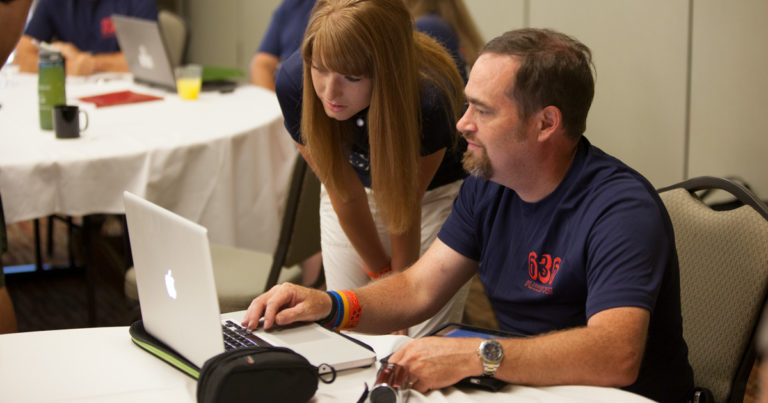Let’s get at least 50 percent of direct-contact leaders trained in 2017

Every Scout deserves a trained leader, but less than 50 percent of direct-contact leaders complete basic training for their position.
Scouting U wants to change that.
The BSA’s training team has set its 2017 goal: at least 50 percent of direct-contact leaders trained this year.
Direct-contact leaders, as the name implies, are adult volunteers who have direct contact with youth. (See a complete list below.)
Nationally, the percentage of direct-contact leaders trained has risen steadily:
- 2016: 46.3 percent
- 2015: 44.5 percent
- 2014: 41.9 percent
The 50 percent threshold is in reach, but we need your help encouraging fellow Scouters to get trained.
Who are direct-contact leaders?
- Cubmasters
- Assistant Cubmasters
- Den Leaders
- Assistant Den Leaders
- Scoutmasters
- Assistant Scoutmasters
- Varsity Coaches
- Assistant Varsity Coaches
- Crew Advisors
- Associate Crew Advisors
- Skippers
- Mates
What courses are required for someone to be considered ‘trained’?
A direct-contact leader is trained once he or she has completed:
- Youth Protection training
- Position-specific training (including Introduction to Outdoor Leadership Skills for direct-contact Boy Scout leaders)
This PDF offers a handy breakdown of required training by position.
Where does someone take these courses?
You can find an overview here.
Some of these training courses must be completed in person, while others can be taken online through the BSA Learn Center, available at My.Scouting.
Why take basic leader training?
Five quick reasons:
- The training requires a small time investment with a big payoff.
- It’ll improve the impact our youth programs have on Scouts and Venturers.
- Training helps adults deliver enriching, effective and fun learning opportunities for young people.
- It makes your job easier and more rewarding.
- You can do all or most of it online.
What can you do?
If you haven’t yet completed position-specific training, please do so.
If you have, please encourage your fellow volunteers to get trained. How? Here are some ideas.
Let’s get at least 50 percent of direct-contact leaders trained in 2017
